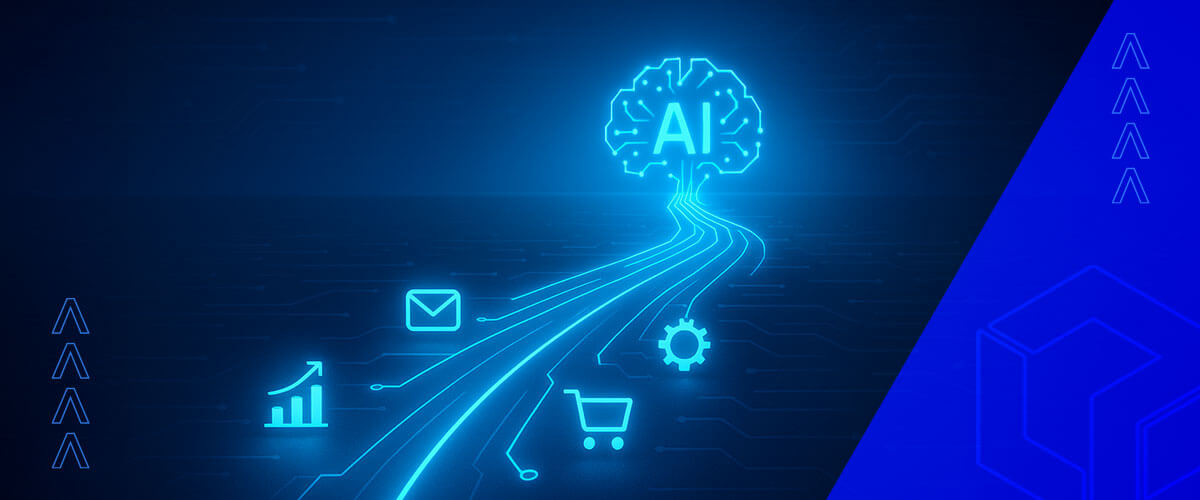Artificial intelligence (AI) has officially moved from buzzword to business driver. From streamlining customer service to powering advanced analytics, AI is quickly moving from experiment to expectation.
But there’s a catch. Many companies adopt AI tools without a plan, only to find them underused, abandoned, or misaligned with business goals. At Logical Position, we’ve seen firsthand that the organizations realizing the most value from AI aren’t those that move the fastest, but those that move the smartest.
That’s why we recommend treating AI like any other enterprise initiative — with clear evaluation, structured rollout and ongoing measurement. Here’s a three-part framework we use to guide businesses through AI adoption.
Step 1: Discover What’s Already Possible

You may not need to start from scratch. Most enterprise platforms — including Salesforce, HubSpot and Microsoft 365 — are steadily layering AI features into their offerings. Start by taking inventory of your current systems to pinpoint underused AI functionality.
Once you pull back the curtains, you can evaluate whether your data and processes are ready to support AI. If your information is siloed, poorly formatted or locked behind compliance restrictions, AI won’t generate meaningful insights.
At LP, we often advise clients to start small: connect an AI assistant to a trusted system, test broad prompts and see what value emerges. This discovery step highlights both the opportunities and the gaps in your business AI readiness.
Questions to ask at this stage:
- What AI features are already included in our enterprise systems?
- Do we have the right data protections in place to use them responsibly?
- Can our teams experiment without putting sensitive information at risk?
Step 2: Build a Culture of Adoption

AI adoption isn’t just a technology rollout — it’s a cultural shift. Once you’ve validated that AI has value, widen the testing circle. Involve department leaders, encourage cross-functional experiments and identify early adopters who can champion the technology to peers.
At the same time, guardrails are essential. Without them, employees may default to personal ChatGPT accounts for business tasks — creating both brand inconsistency and potential security risks.
Best practices for this stage:
- Consolidate overlapping tools to avoid unnecessary spending.
- Establish standards for prompts, tone and acceptable use cases.
- Train your teams so they know when AI adds value, and when human expertise is critical.
When adoption is approached as a company-wide initiative, AI becomes a productivity enhancer instead of a siloed experiment.
Step 3: Optimize for Long-Term Impact

The most important question isn’t are we using AI? But rather, is AI saving us time and improving outcomes?
Tracking efficiency metrics, employee feedback and customer experience helps determine whether your AI strategy is working. If the tools create more friction than value, it may point to an issue with your data or processes — not just the technology itself.
Metrics to measure:
- Time saved on repetitive tasks
- Accuracy of AI-generated outputs
- Impact on customer experience and employee efficiency
At LP, we stress that AI adoption is iterative. The landscape is changing too quickly to set it and forget it. Ongoing measurement ensures your business evolves alongside the technology.
Pitfalls to Avoid

Even well-intentioned AI rollouts can stumble. Watch out for:
- Over-buying tools that duplicate existing features
- Skipping security reviews and exposing sensitive data
- Expecting an overnight transformation instead of gradual efficiency gains
- Treating AI as a replacement for people rather than an enhancement to their work
A structured roadmap helps avoid these pitfalls and keeps adoption sustainable.
Quick Checklist for Business Leaders
✔️ Audit current platforms for underused AI features
✔️ Confirm compliance and data protection policies
✔️ Identify internal champions to lead adoption
✔️ Standardize prompt guidelines and brand voice
✔️ Measure outcomes and refine usage regularly
The Road Ahead
AI is already influencing customer expectations, marketing performance and business operations. The companies that succeed won’t be those chasing every new trend — they’ll be the ones approaching adoption with discipline and purpose.
At Logical Position, we help businesses connect strategy to execution. Whether that means auditing your current stack, aligning AI use with marketing goals or measuring ROI, we believe thoughtful adoption is the best path forward.
Your next step doesn’t have to be big. Start by exploring what’s already in your toolkit, set guardrails and measure as you go. From there, scaling AI adoption becomes less about hype — and more about results.
Ready to explore how AI can enhance your marketing strategy? Connect with us and let’s build the right roadmap for your business.





